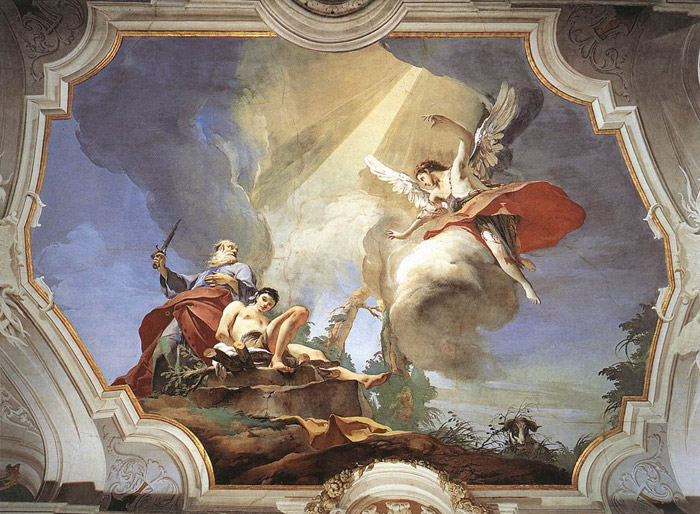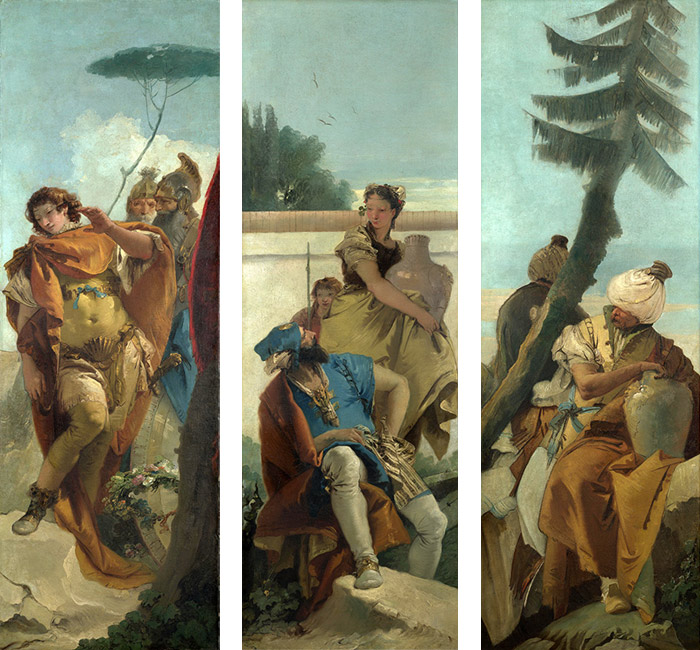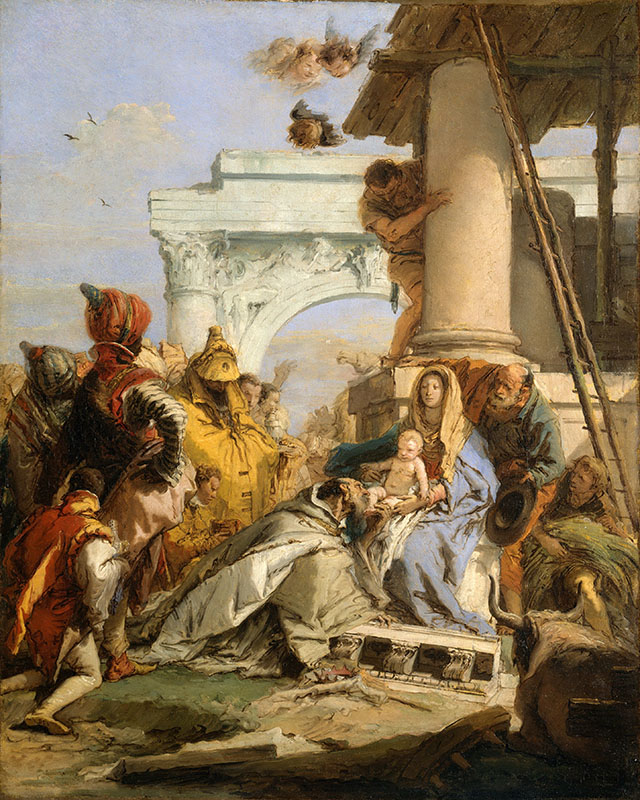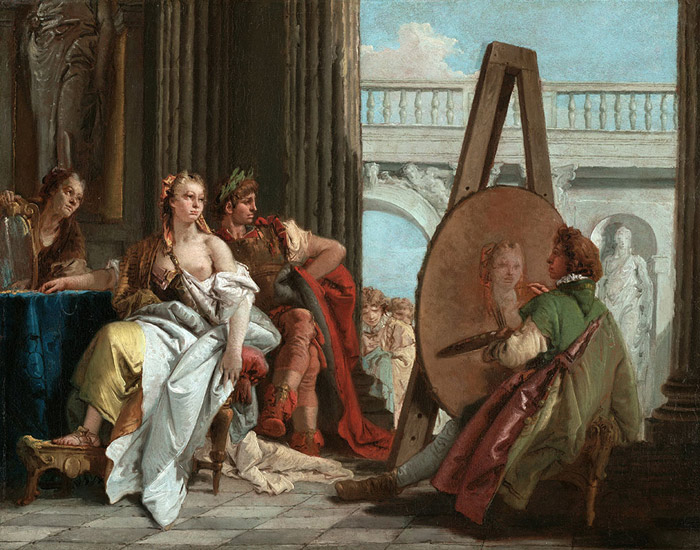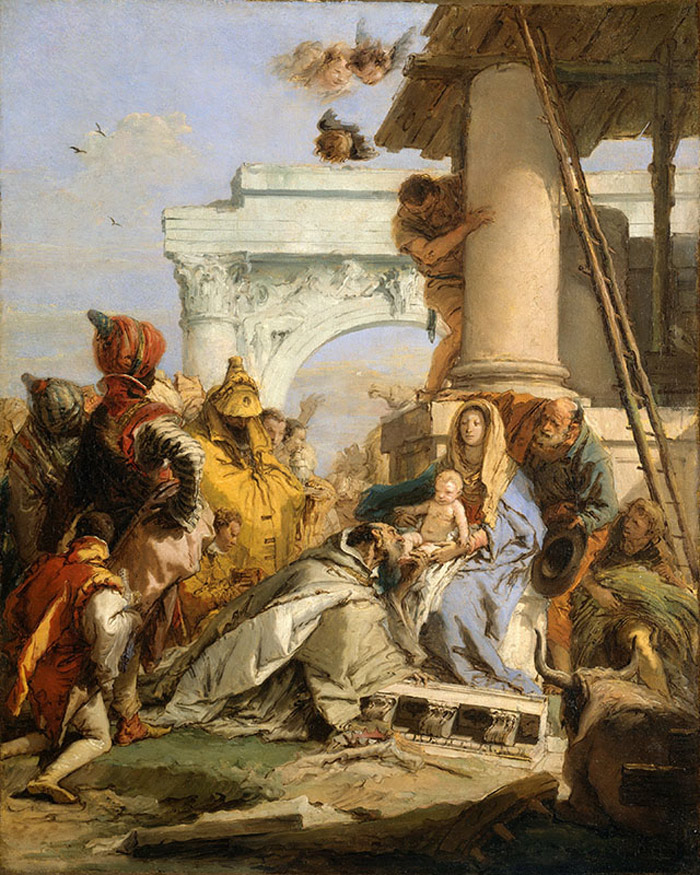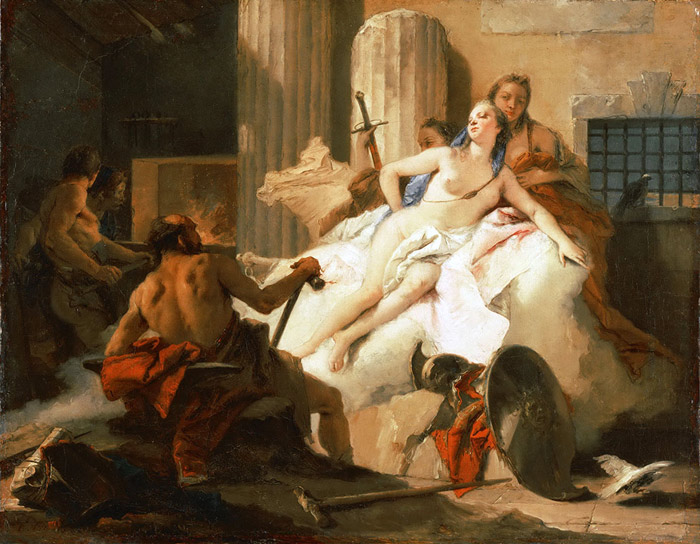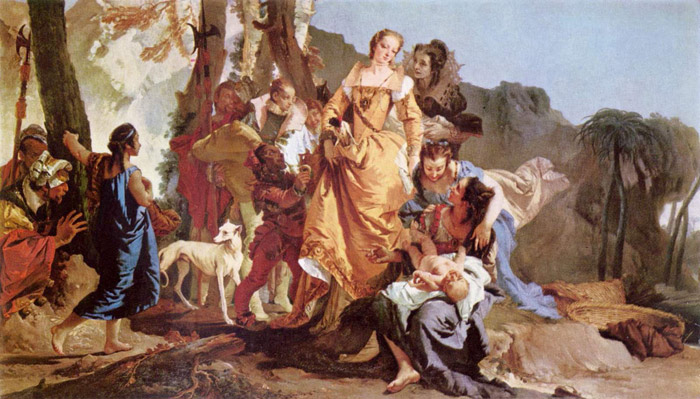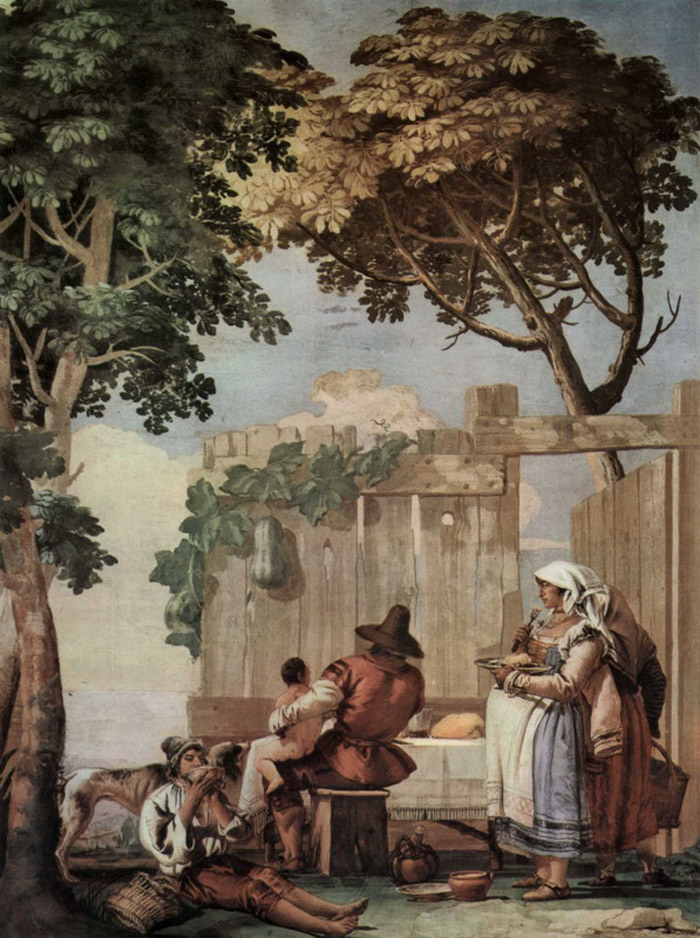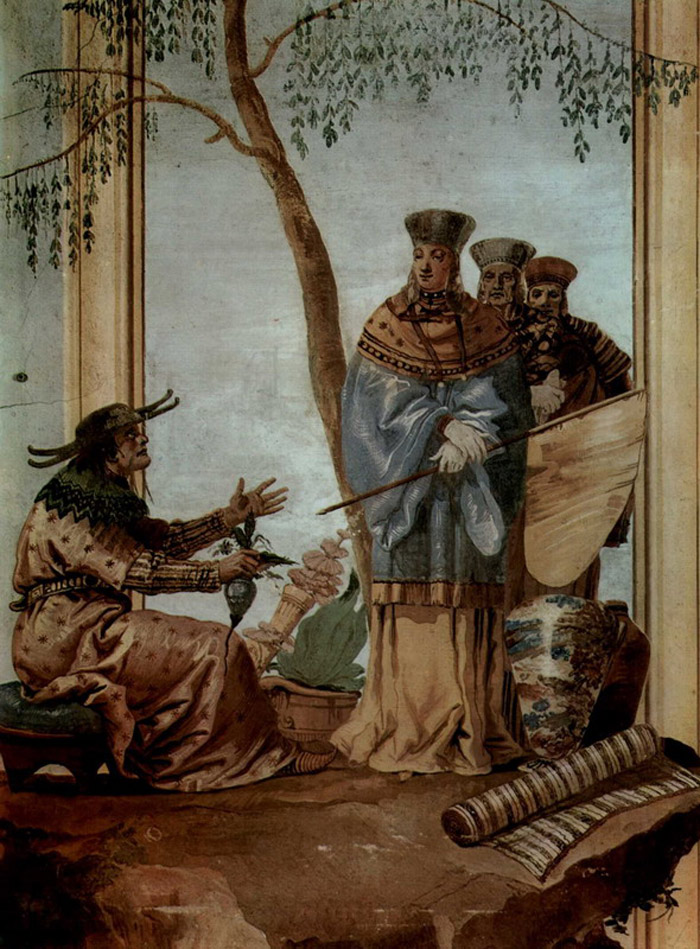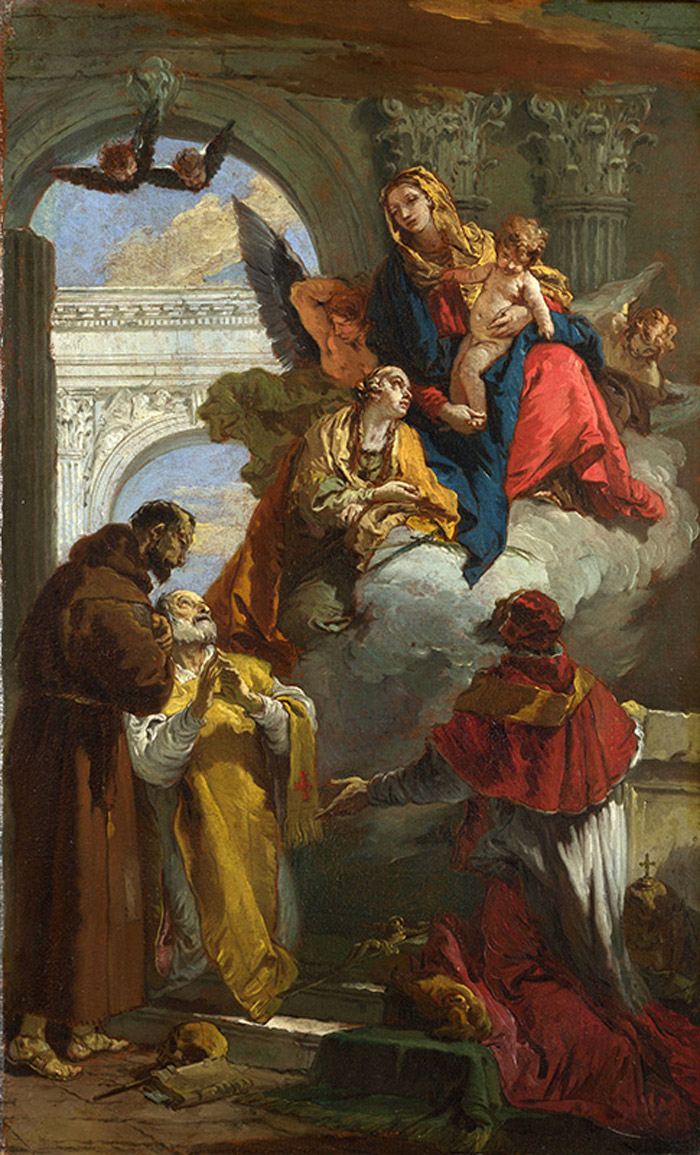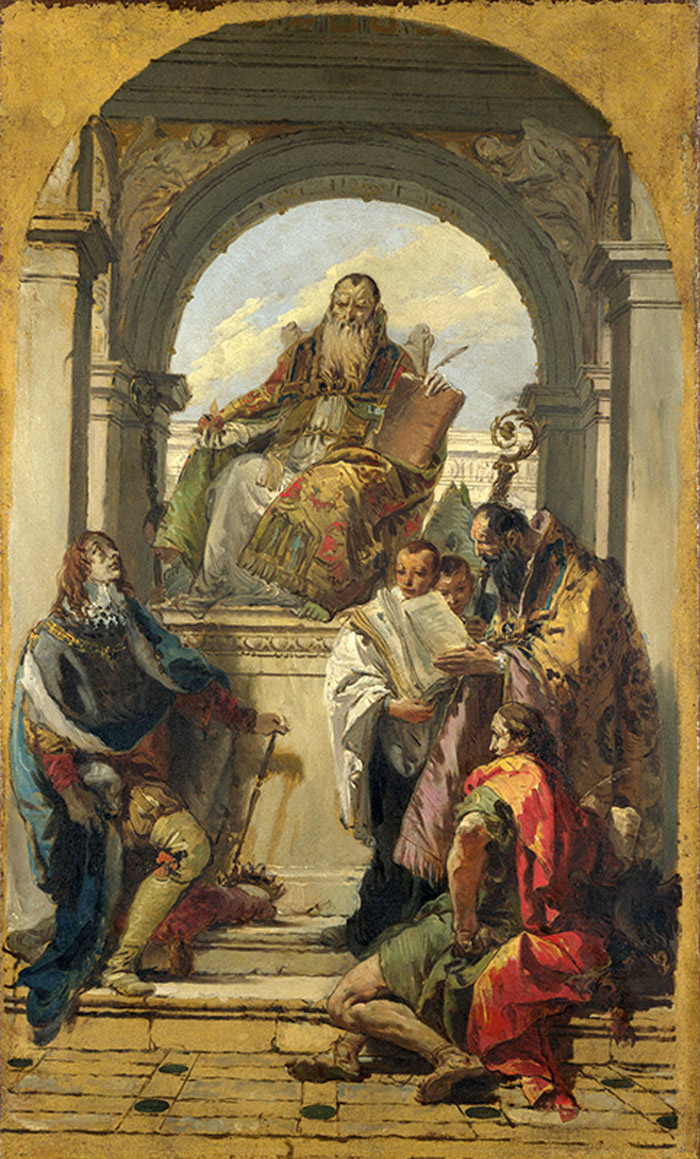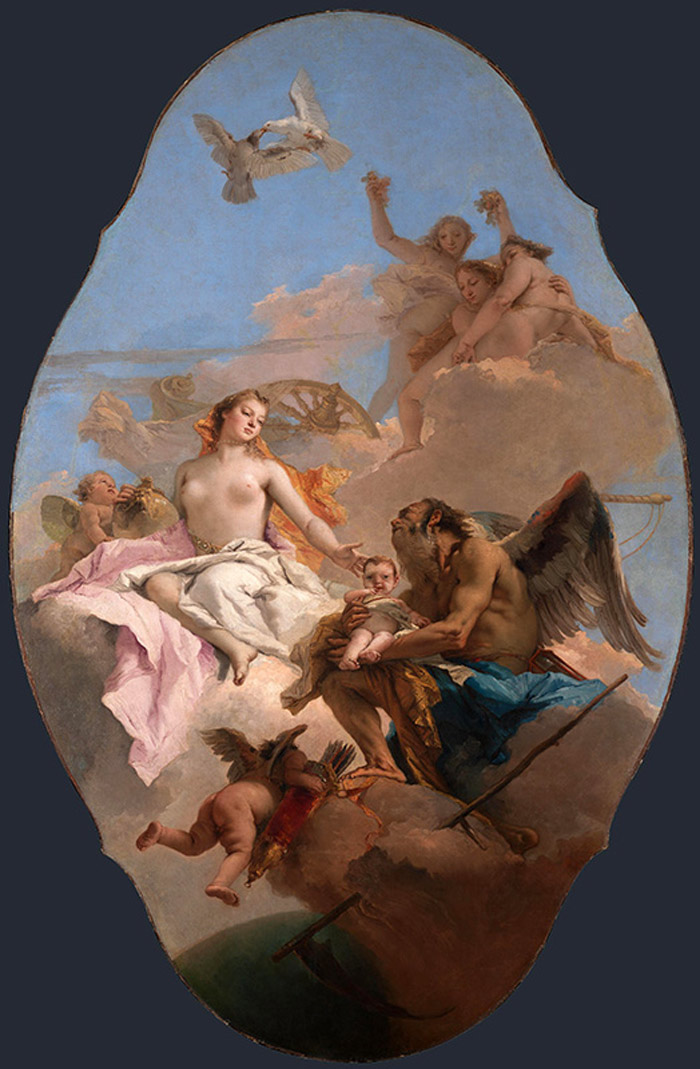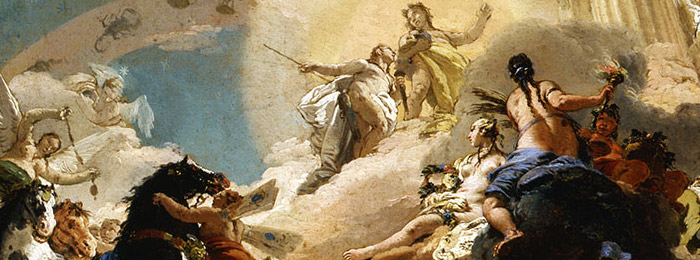Article from Coco Depink

Italian (Venice), 1686-1770
When Giambattista Tiepolo was called from his native Venice in 1730 by the Archinto family to decorate their palace in Milan, he was embarking on a career that would establish him as Europe’s foremost decorative painter. Tiepolo studied with Giorgio Lazzarini, but it was the vast ceiling paintings by Paolo Veronese, the sixteen-century master, and the impressive altarpieces of Giovanni Battista Piazzetta, Tiepolo’s contemporary, that had the most profound effect on his art. As early as 1726 Tiepolo was referred as ‘celebre Pittor’ (by the Udine town council) and his fresco decorations along with his sketches and easel paintings, where soon in high demand throughout Europe. He would enjoy an illustrious international career, working for the courts of Wurzburg and Madrid before dying in Spain in 1770.
Apollo and Phaethon is an extremely important record of Tiepolo’s painting cycle at the palazzo Achinto, which was destroyed by bombs in 1943. Unpublished and unknown to the scholarly community before it appeared at auction in 1985, the painting is directly related to a fresco that decorated the ceiling of one of the four reception rooms in the palace. It tells the story of the semi divine Phatheon who sought to prove his mother’s assertion that he was the son of the god Apollo. He did this by coaxing Apollo’s permission to allow him to drive the Charriot of the Sun, which the sun-god guided across the zodiac to usher in each new day. Apollo, who actually was Phaethon’s father, reluctantly agreed, but the young man, unable to control the feisty stallions in their charge across the sky, flew too close to earth, scorching it and creating the desert of Africa. The planet was spared total immolation by Jupiter, who halted Phaethon’s ill-advised ride by rocking him from the chariot with a thunderbolt.
Tiepolo did not paint the more commonly depicted episode in the story, Phaethon’s fall, but the earlier moment, when the young man begs his father’s permission to lead the horses. In the center of the composition stands the radiant Apollo before his temple, his hands raised in protest to the entreaties of Phaethon, who gestures to the grand chariot below. The fierce horses that pull it are barely kept in check by a number of nymphs and putti. Tiepolo clearly read his Ovid carefully, incorporating its vivid description of what Phaethon saw on Olimpus, nothing in particular the personifications of the four seasons, which he grouped at the right edge of the painting: “…Here Spring appears with floe’ry Chaplets bound; here summer in her wheaten Garland crown’d; here Autumn the rich trodden Grapes besmear; and hoary Winter shivers in the Rear…” (Methamorphoses 2:23-30). In the left distance the zodiac arcs across the sky with Scorpio prominent in the center, alluding to a part of the story where Phaethon drops the reins after being frightened by the scorpion. Saturn the god of time, swoops into the scene at the top, his form seen in vertiginous foreshortening.
